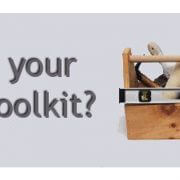You are ready with your plans for your SEO campaign and have little or no idea where to start. Well here, we are providing you with basic SEO tips and trick for beginners to make your website more visible to others on a search engine.
• SEO basics
• Improving your website’s structure
• Contents Optimization
Your Beginners Guide: For Starters
The first and basic step is to find accurate and proper keywords for your site content. Accurate and good keywords help your site to become more visible and identifiable in searches. Be very specific and accurate while choosing your keywords. Instead of choosing a simple generic keywords, choose keywords or phrases that are more focused and targeted towards your content and your business goals. If you have an online book shop, instead of choosing books try to select more targeted words like bestsellers for sale, you should be specific and unique. Your keywords must be very user friendly and have a large following among users. You can as a starter get some help on choosing your keywords from Google Adword keyword searching tool.
After you have finished choosing and making a list of your keywords to start with your SEO plan, now you have to create an accurate and unique title for your website, which will accurately explain search engines about your website and its contents. Your title will appear on search engines when someone searches your website in such search engines or makes a search with similar requirements.
The description Meta tag is another tool that you must make use of on your SEO. A description Meta tag of a page provides a summary of the page to the search engines. The importances of description Meta tags are that the search engines might use these as snippets for your websites pages. Words for snippets are bold when they appear on the search engine results giving information to the user whether the content of the website pages are what he/she might be looking for making it easier for them to choose the right webpage.
On a search engine your Meta tags will appear like a summary about your site. Your page title will also appear alongside.
For example:
Fashion accessory – Wikipedia, the free encyclopedia > Webpage Title Tag (60 characters)
en.wikipedia.org/wiki/Fashion_accessory > Webpage URL
A fashion accessory is an item which is used to contribute, in a secondary > Meta tag descriptions (160 characters)
manner, to the wearer’s outfit. The term came into use in the 19th century.
Best practices to follow for SEO basics are:
• Choose accurate and proper keywords
• Accurately describe content of pages
• Create an accurate and unique title tag
• Summarize your pages content accurately
• Use unique description Meta tags
Improving your Websites Structure
The use of simple and easy to understand URL’s will easily convey the content information to the users. Lengthy URL’s can be very confusing and unfriendly to a user so it’s better to stick with simple and short URL’s. Keep your URL simple and non confusing with use of too much jumbled alphabets and letters.
For example:
https://www.abcd.com/topic (Simple URL)
vs.
https://www.abcd.com/topic/7/456372/ins (Complex URL)
Having a simple URL free of too many letters and alphabets gives your site better chances of increased traffic.
Making your website easier to navigate for the visitors makes it easier for them to find what they are looking for in your website. It also helps search engines to understand the content of your site and direct visitors to your site. Make a well organized and structured navigation menu on your site. Always create a sitemap on your site with displaying your sites structure and listing of the contents of your site. A visitor can always go to this page to easily find what they are looking for. Search engines too visit these pages to understand your site better to divert traffic to your site when looked up by users.
It is useful to have internal links on your site. It will help users to understand your content and your site better by linking them to contents and pages not found or present on navigation menu. Another make sure that your contact information is clear, accurate and easily accessible by the user. Always keep an internal link to your contact information page on the bottom of every page so that it is easily noticed and accessible to users. The worst case scenario would be that a user interested in your services or products does not find any or clear contact information.
Best practices to follow for improving your website structure:
• Use simple and easy to understand URL
• Have a well organized and structured navigation menu.
• Use of internal links
• Create a page for your contact information.
• Creating a natural flowing hierarchy
• Make use of texts for navigation
• Always put an HTML site map on your site
Contents Optimization
The content of your site must be qualitative and full of information. The information and content of your site is a number one factor for increasing traffic to your site. A user will direct traffic to your site when and if s/he finds the content satisfying and full of information through personal recommendations, blogs or through social media. After you have decided on your content for your site ask someone to proofread it to see if the content is reader friendly and full of information. You can ask your family members, friends or colleagues for help in this matter. Make sure that you get two or three people to read the content as user preferences may vary. Having a fresh, updated and information packed content is almost half of your SEO campaign.
Always keep your content keyword rich to make it easier for the search engines to direct users to your site. It is also very important to know the differences between users to make keyword selecting for your content. A skillful and avid user will use different keyword in his searches than a new and inexperienced user. So, anticipating these differences between users and creating a mixed keyword rich content is a positive tool for your site.
Limit the use of images on your content as links. Images though prove useful and give your content a better look and understandability but use of too much images just makes a clutter on your site and sometimes confuses the user.
The use of anchor texts on your sites content is also a better idea. Anchor texts are texts that have a link attached to it and will direct a user to another page of the site or sometimes to another page to make the content easier to understand. Keep the use of anchor texts to the required minimum, overuse of anchor texts will make your site over optimized and get you penalized by Google for overuse.
Best practices for optimizing the content of your website:
• Content must be easy to read and not confusing
• Proofread the content with the help of another individual
• Always be organized about the content of your site
• Always have fresh contents
• Create content targeted for users easy understanding
• For anchor texts, use descriptive texts
• Make it easier for the user to spot anchor texts
• Keep the use of anchor texts to required minimum
• Use minimal images as links
• When using images as links supply texts along with it

 Call Us today!
Call Us today! 











